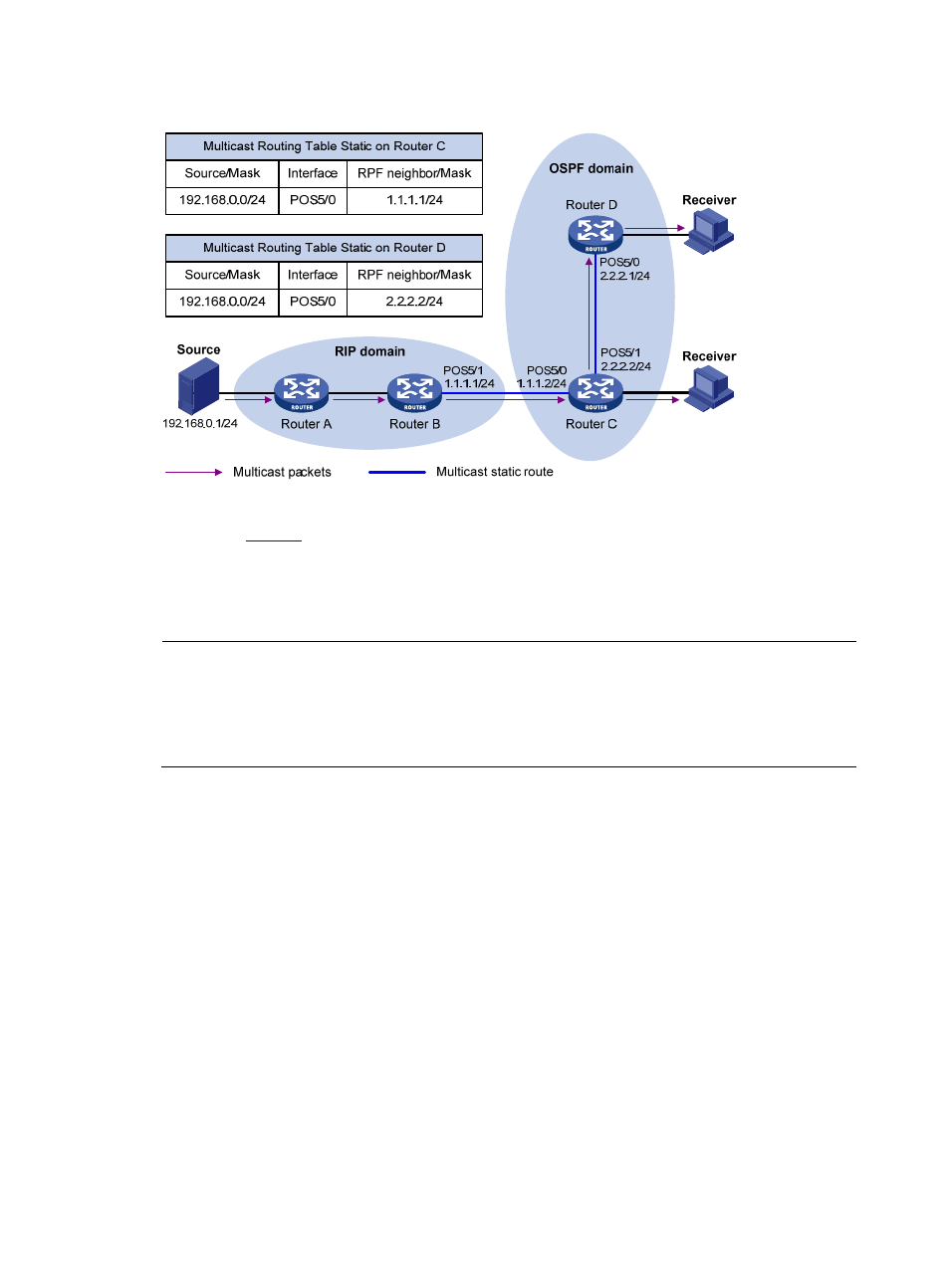Application of gre tunnel in multicast forwarding – H3C Technologies H3C SecPath F1000-E User Manual
Page 19

5
Figure 3 Creating an RPF route
As shown in
, the RIP domain and the OSPF domain are unicast isolated from each other. When
no multicast static route is configured, the hosts (Receivers) in the OSPF domain cannot receive the
multicast packets sent by the multicast source (Source) in the RIP domain. After you configure a multicast
static route on Router C and Router D, specifying Router B as the RPF neighbor of Router C and Router C
as the RPF neighbor of Router D, the receivers can receive multicast data sent by the multicast source.
NOTE:
•
A multicast static route only affects RPF check; it cannot guide multicast forwarding. Therefore, a
multicast static route is also called an RPF static route.
•
A multicast static route is effective only on the multicast router on which it is configured, and will not be
advertised throughout the network or redistributed to other routers.
Application of GRE Tunnel in Multicast Forwarding
There may be routers that do not support multicast protocols in a network. As multicast traffic from a
multicast source is forwarded hop by hop by multicast routers along the forwarding tree, when the
multicast traffic is forwarded to a next-hop router that does not support IP multicast, the forwarding path
is blocked. In this case, you can configure a generic routing encapsulation (GRE) tunnel across the
network.
For more information about GRE tunneling, see GRE Configuration in the VPN Volume.
